Feb 25, 2020 | advice, commentary, grading, registry sets
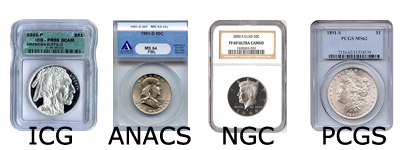 Last month, the American Numismatic Association announced that they have partnered with Numismatic Guarantee Corporation (NGC) to launch the ANA Coin Registry.
Last month, the American Numismatic Association announced that they have partnered with Numismatic Guarantee Corporation (NGC) to launch the ANA Coin Registry.
According to the ANA press release, the ANA Registry will accept coins graded by NGC and Professional Coin Grading Service (PCGS). The ANA Registry will be the only service that will allow both NGC and PCGS graded coins.
NGC has been a partner with the ANA for 25-years making it a natural choice to implement this program. Since NGC once allowed PCGS graded coins to count in their registry program, the facilities continue to exist for them to create a similar program for the ANA.
Participation is open to any collector. ANA members will receive a special icon of recognition next to their sets.
What is missing from the registry is the ability to include ANACS and ICG graded coins. Regardless of the opinion of these companies, they are competitive services to NGC and PCGS with a legitimate niche in the market.
By excluding ANACS and ICG, the ANA is telling the public that they decided who the best third-party grading services are. It is not the job of the ANA to pick market winners. Let the collecting public decide.
One advantage that ANACS and ICG has is that there are no memberships required to submit coins for grading. Anyone can directly submit coins to either company. Although ANA members can directly submit coins to NGC without an additional membership, only PCGS members can submit coins for grading.
Allowing open submission policies will allow for more people to participate. They can collect what they like and send it to ANACS and ICG without having to spend extra money or rely on a member. It will create greater access to casual collectors who might become more series if they can participate.
Could there be other reasons for not including ANACS and ICG? Since anyone can submit coins to ANACS and ICG, how will the dealers make money? If a collector buys a coin online or from another collector and sends their coins to ANACS or ICG for grading, how will the dealers make money?
Further, dealers have their own biases. They decided which grading service they like the best based on many factors, including perception and financial reasons. Whatever these reasons are should not be the policy of the ANA.
If the ANA is to fulfill its mission to encourage people to study and collect money and related items, then they cannot be picking market winners and losers. The ANA must revisit this policy and include the entire market without bias.
Nov 20, 2019 | advice, coins, commentary, Eagles, silver

Want more information about American Eagle Coins?
The Coin Collectors Handbook: American Eagle Coins has more information and is fully illustrated. Read more →
here;
Over the years, I have heard from many people regarding the problems with mailorder numismatics. Every few months, someone writes and asks about the value of something they bought from a non-numismatic magazine or from something they saw on television.
My answers tend to be upsetting because the market does not value these items as the television hucksters do.
Recently, I wrote about the experience with someone who brought in a box of coins he bought from television and magazines. I described his reaction as “The look on his face when I told him was as if I kicked his dog.” Then I was provided an example of why my words land very hard.
Sunday’s are my day off. Even though I have personal work to catch up on, I will play couch potato and watch television. This past Sunday, I entered the wrong number in the remote and landed on the Fox Business channel.
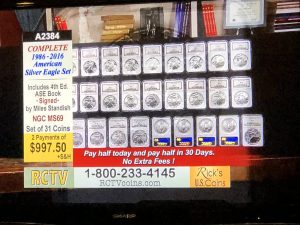 On the weekend, when the markets are not open, the business channels broadcast other programming. At this time, Fox Business was airing an infomercial for Coins TV.
On the weekend, when the markets are not open, the business channels broadcast other programming. At this time, Fox Business was airing an infomercial for Coins TV.
When I tuned in, the camera was panning a display with graded American Silver Eagle coins. Of course, I stopped to stare at the shiny silver coins. Then I heard the pitch.
The pitchman is Rick Tomaska, owner of Rare Collectibles TV. Tomaska seemed pleasant and appeared knowledgable. His pitch was selling a date run of American Silver Eagle graded MS-69 by NGC for $1,995.00. It almost seemed reasonable until it was made clear that the pitch was for a date run of 31 coins from 1986-2016.
Is $1,995.00 a good deal for the 31 coins? My first instinct was to check the price guides. Since the online Greysheet does not include the retail price for graded bullion coins (why?), I used two other guides: Numismedia Fair Market Value Price Guide and the price guide from NGC. Based on a grade of MS-69, the guides provided the following information based on prices for the 1986-2016 34-coin set:
| |
Numismedia FMV
34 coins @ MS-69 |
NGC Price Guide
34 coins @ MS-69 |
RCTV Infomercial
31 coins @ MS-69 |
| Total |
$1,240.00 |
$1,679.00 |
$1,995.00 |
Average |
$40.00 |
$54.16 |
$64.35 |
But Numismedia and NGC are price guides. Guides are not the retail prices a collector would pay. So we turn to the interwebs to search for “date run American Silver Eagle coins.” The search returned several entries on the first page that was not RCTV.
Taking the top three entries from the search, only one dealer was sold out. The others offered a complete set of 34 coins, 1986-2019, graded MS-69 by NGC for considerably less than Tomaska’s price. To be fair, where there was a difference between the cash and credit prices, I used the credit card price, which is usually higher. Then I searched eBay and sorted for the lowest price. The following is what I found:
| Company |
Date Run |
Coins in Set |
Advertised Price |
Shipping |
Average per coin |
| RCTVcoins.com |
1986‑2016 |
31 |
$1995.00 |
|
$64.35 |
| JM Bullion |
1986‑2019 |
34 |
$1541.70 |
|
$45.34 |
| Mint Products.com |
1986‑2019 |
34 |
$1399.99 |
|
$41.18 |
| eBay Seller constitutionclct |
1986‑2019 |
34 |
$1299.00 |
$14.95 |
$38.65 |
For the eBay dealer who was charging for shipping, the cost per coin was the lowest even after adding the shipping costs to the total price.
 JM Bullion and Mint Products.com are reputable companies. Both firms are worth considering if you do not feel comfortable making this purchase from an eBay seller. Note that these companies will base the price of their bullion coins on the current spot price of silver. Their retail prices may fluctuate.
JM Bullion and Mint Products.com are reputable companies. Both firms are worth considering if you do not feel comfortable making this purchase from an eBay seller. Note that these companies will base the price of their bullion coins on the current spot price of silver. Their retail prices may fluctuate.
When you buy from these television advertisements, you will overpay.
To help enforce the issue, the JM Bullion website said that they would buy a complete date set of American Silver Eagle bullion coins for $1,094.12 when I looked up the price. If you purchased the set advertised on television, you would be LOSING $900!
As part of the pitch, if you ordered the set, Tomaska would send a copy of the 4th Edition of American Silver Eagle: A Guide to the U.S. Bullion Coin Program autographed by Miles Standish, the book’s co-author, who was present with Tomaska.
What is sad is that Miles Standish joined Tomaska as part of this infomercial. Although Standish did not assist Tomaska in his pitch for the set, his presence is an appearance of legitimacy. It is similar to the appearance of past ANA President David Ganz on an infomercial. Neither endorsed the product that was being sold, but their presence was used to suggest otherwise.
I would not recommend buying coins or any collectible from a television show. Every collectible I have seen being hawked on television was 45-60 percent over what might be considered wholesale value for its market.
As a small business owner, I would be foolish to criticize someone for making a profit. It’s the Ameican way. However, there is a difference between making a profit and price gouging. It is why I am warning you against purchasing collectibles from a pitch on television.
Jan 17, 2019 | advice, coins, counterfeit, errors
 One of the more popular collector series is the Indian Head or Buffalo Nickels. Designed by James Earl Fraser, a student of Augustus Saint-Gaudens, this design was a continuation of President Theodore Roosevelt’s “pet crime” to change the look of the nation’s coinage.
One of the more popular collector series is the Indian Head or Buffalo Nickels. Designed by James Earl Fraser, a student of Augustus Saint-Gaudens, this design was a continuation of President Theodore Roosevelt’s “pet crime” to change the look of the nation’s coinage.
Introduced in 1913, the coin features a right-facing Indian head (now called a Native American head). Although there have been claims by several tribal chiefs that they were the model, Fraser’s notes suggest the image was created using the features of several men.
The reverse features the image of a buffalo, which in reality is a North American bison. The 38 different types of buffaloes live in Africa and feature larger horns similar to a longhorn steer. Most are domesticated and are raised like cattle is in the United States. Bison are largely wild animals native to the western hemisphere. Aside from their shorter horns, they have beards hanging from their chin and heavier coats that allow them to survive in colder climates.
But that has not stopped people from referring to the coin as a Buffalo nickel. It is a design so popular that when it has been used in coinage, the available supply usually sells out.
War Nickels
Before I receive a deluge of email, the Jefferson nickels struck from 1942 through 1945 were struck on a planchet made from .560 copper, .350 silver, and .090 manganese and features a large mint mark over the image on Monticello on the reverse. This was done to reduce the use of copper and nickel needed for the war effort.
Like every five-cents coin made since the introduction of the 1883 Liberty Head or “V” nickel, the planchet is made from an alloy of 75-percent copper and 25-percent nickel. Most vending machines will not be able to tell the difference between a Buffalo nickel and a Jefferson nickel.
The coin’s ability to be used in vending machines and how a worn coin could pass the unwatchful eye of a cashier, it is possible to find a Buffalo nickel in change. Although there are very few of these coins remain in circulation, avid change hunters say they can find one every 12-16 months.
This was the case when a reader found what was thought to be a 1914-D Buffalo nickel. Although not a rare or key date, a 1914-D coin could be worth upwards of $70-80 in good (G-4) condition. Finding a Denver mint coin from that year would be better than finding a Philadelphia mint coin since a coin in good (G-4) condition would be worth $16-18.
But this coin was different. Rather than having a “D” mintmark on the reverse, the “D” was backward!
-

-
The found coin, a 1914-D Buffalo Nickel (obverse)
-

-
The reverse of the found 1914-D with an alleged “Inverted D” mintmark
Prior to the U.S. Mint creating dies with mintmarks in Philadelphia, they would send dies to the branch mints without mintmarks. The coiners at the branch mint would use a punch to imprint the mintmark into the die before striking coins. Of course, this manual process was not perfect and there are cases of mispunched, repunched, overpunched, and other such errors.
There have been cases of a mintmark that was punched horizontally into the die. Those mintmarks were repunched correctly. Coins from the San Francisco mint has had errors where the “S” is punched upside down known as an inverted mintmark. This is a fun error to find because noticing this error requires a careful eye and patience along with understanding the shape of the “S” in the font used.
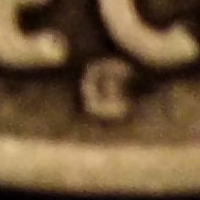
A closer look at the “inverted” D mintmark
Adding or removing mintmarks is a common method to artificially change the value of a coin. Remove the “S” from a 1921 Walking Liberty half-dollar and watch its value raise by 300-percent. Or practice adding a “D” to a 1914 Buffalo nickel to make a 400-percent profit.
After checking several references and speaking with two dealers, I sat with a box of Buffalo nickels I have to compare the mintmarks to the one on the coin. Additionally, I consulted with the images at PCGS Photograde. After all, it could be a real, undiscovered error.
The first thing I noticed on the image and with the coins I have on hand is that the mintmark on this coin is too defined for the grade. When comparing the coin to the images on Photograde, if the coin was sent in for grading it would probably be assigned a grade of G-6 of VG-8. Because of the worn rims, this coin would not grade higher than VG-8 and could be assigned a G-4.
As I was looking at the coins, those that would grade VG-8 or lower with worn rims also had mintmarks that were almost worn into the rim. In more than a dozen examples from my box, the mintmarks on all of the low-grade coins showed the rims and mintmark worn together.
Another aspect of the mintmark that bothered me was that the “D” seemed smaller than those on the coins I was looking at. For comparison, I pulled out my album with higher grade Buffalo nickels and found that the mintmark was similar in size to those in higher grades.
-

-
According to PCGS Photograde, this 1921 Buffalo Nickel represents a VG8 grade.
-
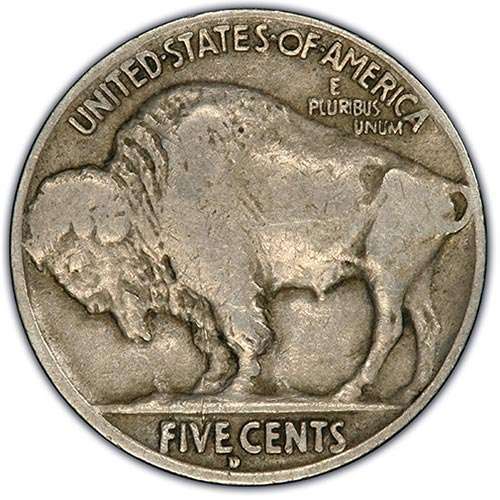
-
Look at the “D” mintmark on this 1929-D nickel graded F12 as part of PCGS Photograde
Then there is the coloring around the mintmark. Comparing it to the examples in my box, the dirt patterns around the “D” seems off. While the coloring around all of the letters appears to be uneven, there appears to be a consistent line around the “D.” In fact, the coloring at the bottom of the “D” is inconsistent with that of the other letters around it.
If I had the coin in hand, I would be able to examine it closer with a 15x loupe. I would even attempt to pick at it with a toothpick to see if the “D” would fall off. However, given all of the issues with the coin based on the images alone, I am reasonably certain that the “D” was added by someone outside of the U.S. Mint.
Of course, if you have your own theories then please post them as a comment, below.
PCGS Photograde images courtesy of PCGS and can be found
here.
Jul 1, 2018 | advice, legal, news

Image of fake ATF badge Jonathan A. Kirschner used to lure his victims. On June 25 Kirchner pleaded guilty to impersonating an ATF agent and selling and importing counterfeit coins and precious metals bars.
Jonathan A. Kirschner, 34, of Moorestown, NJ, pleaded guilty to impersonating an ATF agent and unlawfully importing counterfeit coins and bullion into the United States.
Kirschner, who used the alias “Jonathan Kratcher,” sold fake gold bars to a collector for $11,000 in cash. When the collector brought them to a dealer it was determined they were fakes. The dealer reported the incident to Industry Council for Tangible Assets Anti-Counterfeiting Task Force (ICTA ACTF) who reported it to federal law enforcement.
After being caught, Kirschner admitted to also selling 59 fake Morgan dollars and importing the bogus coins and bullion from other countries, including China.
Even though Kirschner had a badge that looked real, it is likely that he did not have a Personal Identity Verification (PIV) card that every employee and contractor to the United States federal government is supposed to carry. Those in the military may also know this as a Common Access Card (CAC). Regardless of the name, the format is the same and should be included with the badge to properly identify the law enforcement officer.
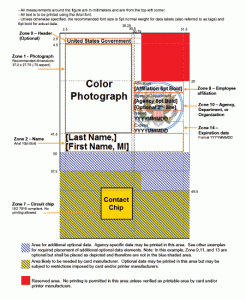
Anatomy of a United States federal PIV card
If you have any question as to the identity of any federal government official, you are allowed to ask for further identification. They must show their PIV card to confirm their identity. When you look at the PIV card, make sure the name and picture match the person in front of you. Also, ensure the agency on the card matches the agency the person claims to be from. It is not enough for the PIV card to say the person works for the Department of Homeland Security (DHS). DHS does not do direct law enforcement. It should say that the PIV card was issued by the ATF, U.S. Secret Service, or any other appropriate law enforcement agency including the Federal Bureau of Investigation (FBI).
Before you buy expensive coins and bullion from a stranger you may want to take a lesson from foreign policy: trust but verify.
And now the news…

June 25, 2018
He wore an ATF badge when meeting with his victims to put them at ease, authorities said.  → Read more at patch.com
→ Read more at patch.com

June 26, 2018
Vancouverite Alexandra Lefort’s passions for painting and planetary science came together when the opportunity presented itself to design the Royal Canadian Mint’s latest silver coin.Gr…  → Read more at vancouversun.com
→ Read more at vancouversun.com

June 26, 2018
Fake currency was used in elaborate satanic hoax in Scandinavia in 1970s  → Read more at theguardian.com
→ Read more at theguardian.com

June 27, 2018
Jonathan A. Kirschner sold fake gold bars and Morgan dollars.  → Read more at philly.com
→ Read more at philly.com

June 30, 2018
If a colonial U.S. coin is jangling in your pocket, consider a visit to Paul Padget’s corner booth this weekend.  → Read more at cincinnati.com
→ Read more at cincinnati.com

June 30, 2018
Since 2006, the metals used to make nickels have exceeded the value of the coin itself.  → Read more at qz.com
→ Read more at qz.com
May 18, 2018 | advice, coins, shows, values
If you are a collector of anything you know that the price of your collectible is based on both a market valuation and what you are willing to pay. There are a lot of market valuation tools for the numismatic collector. One of the more popular ones is The Coin Dealer Newsletter and associated publications that track market trends.
In 2012, I wrote a two-part series about how coins are priced (see Part I and Part II) where I discussed not only how the coins are priced by the different markets for purchasing coins. Last year I wrote about other venues to buy your coins and then earlier this year I added information about estate auctions. All have their audiences, which expands the buying options.
One important factor I discussed is how to negotiate. In “How Are Coins Priced (Part II),” I wrote about negotiating from the perspective of the collector. At the time, I had just started my collectibles business and did not have the experience from the other side of the negotiation table to understand from their perspective.
I thought about this when I stumbled upon an article in Sports Collectors Digest about negotiating. The author spoke to collectors and dealers about their negotiating styles and conditions for negotiating. While the information about negotiating from the collector’s perspective is not that different than what I originally wrote, the impression from the dealer’s perspective is what I have witnessed.
My experience and the article provides two aspects of negotiating from the dealer’s perspective that I want to highlight here.
First, I want to emphasize the concept of BE POLITE! While most people are polite, there have been times I have wanted to punch a customer in the mouth. While I do not mind a little aggressive negotiating being rude will not make me want to work with you on the price.
Second, understand that you are not only buying an item but selling each collectible comes with a cost. Aside from the cost of the inventory, the dealer has overhead. At a show, the dealer has travel expenses. In a shop, there are expenses with maintaining the store.
Even auctions have expenses. Seller fees can be from 25 to 50-percent of the sale price in many professional auctions. Even eBay charges a final value fee for selling on their site and sometimes there are listing fees. While you might complain about paying more than the postage for the shipping costs, there are labor and material costs for packaging your winning item in addition to the postage.
To highlight the issue, the author spoke with a baseball card dealer who said:
This dealer also wanted another “fact of doing business” relayed to others here. He wasn’t saying the mark-up on his items always came to 100 percent of his original purchase price for those items. Rather, if he buys a card for, say, $50, he has to sell that same card for roughly $100 because within that price would be his other costs (lodging, food, transportation, and so forth). Therefore, when the other expenses are factored in, in reality he may be making just 10 percent profit on that card.
The same thing could be said for numismatics as well.
Apr 7, 2018 | advice, education, security
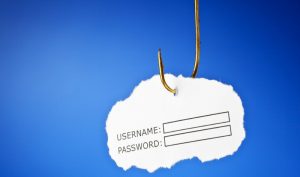 The American Numismatic Association and Numismatic Guarantee Corporation recently issued press releases notifying the public that there have been attempted phishing scams by trying to impersonate a hotel service or someone who works for NGC. Since this is back in the news, I am taking an article I had previously written on the topic and updating it to be more current.
The American Numismatic Association and Numismatic Guarantee Corporation recently issued press releases notifying the public that there have been attempted phishing scams by trying to impersonate a hotel service or someone who works for NGC. Since this is back in the news, I am taking an article I had previously written on the topic and updating it to be more current.
Phishing is the term used to describe the attempt to convince someone to reveal personal information by sending them an email that looks like it came from a legitimate source. Unfortunately, it is so easy to spoof (trick) the Internet’s email system that all it takes is someone with attention to detail to get past spam and other security filters.
Last year, I retired as an information security professional where, for the last 25 years, was contracting to the United States government. I saw many attempted and successful attacks against both government and commercial systems. However, the one attack that is the most difficult to defend is those where humans are convinced to act against their own best interest. The technical industry calls them phishing attack but they are forms of social engineering.
A social engineering attack tries to use something about you or something you care about to convince you to do something that could potentially harm you. For example, an attacker looking to scam someone who collects rare coins may know about NGC’s business. Knowing that the people who might be using NGC’s services are collectors with a lot of disposable income, they could use the weaknesses of the email system in order to fool the recipient into a situation where they can be taken advantage of.
To help you stay safe, the following are rules you can follow to keep safe online:
Rule #1: Unless you are 100-percent certain that the email is legitimate, do not click on the link!
You will be never 100-percent certain that any email you receive is legitimate. Thus, make sure that you are as close as 100-percent certain as possible. One thing you can do is to move your pointer over the link, stop, and wait for the tooltip to show you the address.
Tooltips are those balloon-like popups that will tell you something about the link or element before you press the mouse button. One way to tell that a link is bad is that if the address is not what you think. For example, if the link is supposed to send you to the ANA website, the tooltip better say that it will send you to money.org. If it does not, then do not click on the link.
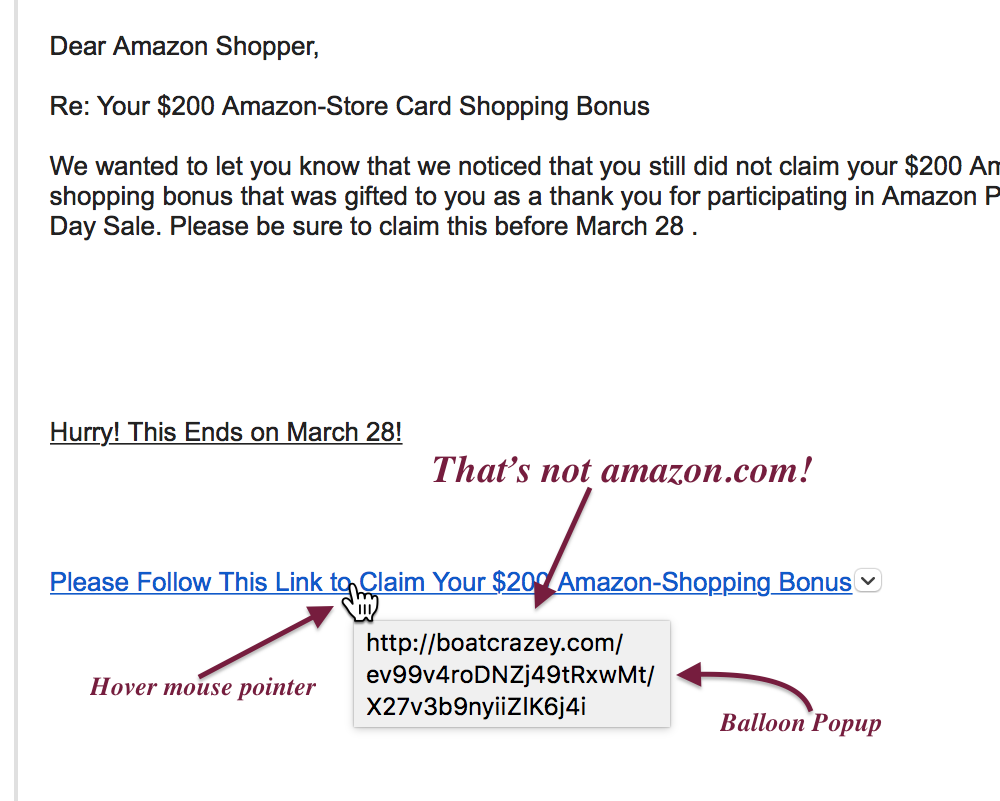
Place your mouse pointer over the link and let the tool tip appear. What does it say?
When you check the link, the address of the server is the first part of the address. If what should be the server name is not in that area at the beginning of the address, do not click on the link.
One trick the phishers use is to show you what looks like a complicated address in the message, but the link behind it will send you to another website. This is where tooltips can help. If you hover over the address and they do not match, it is an attempt to trick you and you should not click on the link.
If you are using a web-based email client, such as Gmail, you can check the address on the status line at the bottom of your browser window. Check to see if the address makes sense. For example, if the email claims to be from Amazon, the link should say “amazon.com” and nothing else. Sometimes phishers will try to write a link using something after the address like “amazon.com.anothersite.co” to fool you. Do not be fooled. A link like this is trying to send you to “anothersite.co” and not Amazon.

Understanding the part of a typical URL and what to look for
If you are unsure about the link, then go to your browser and type in the address yourself.
As with everything in life, there is an exception to the rule. Organizations, like the ANA, will use mailing list services to send out notices to members and anyone else who have signed up for these emails. Unfortunately, the URL you will click on will be one associated with the mailing list service. The service uses this to provide engagement statistics to whoever is sending out the email. For example, for the service that the ANA uses all of the links are to r.listpilot.com.
Mailing list services are great resources for many organizations and their tracking service is necessary to understand the effectiveness of the communication. If you are not sure, continue to visit the organization’s site without clicking on the link.

An example of an email message showing what to look for to understand how to identify it as a phishing attempt.

Examine the envelope information, also referred to as the headers of the message, for signals that this could be a phishing attempt.
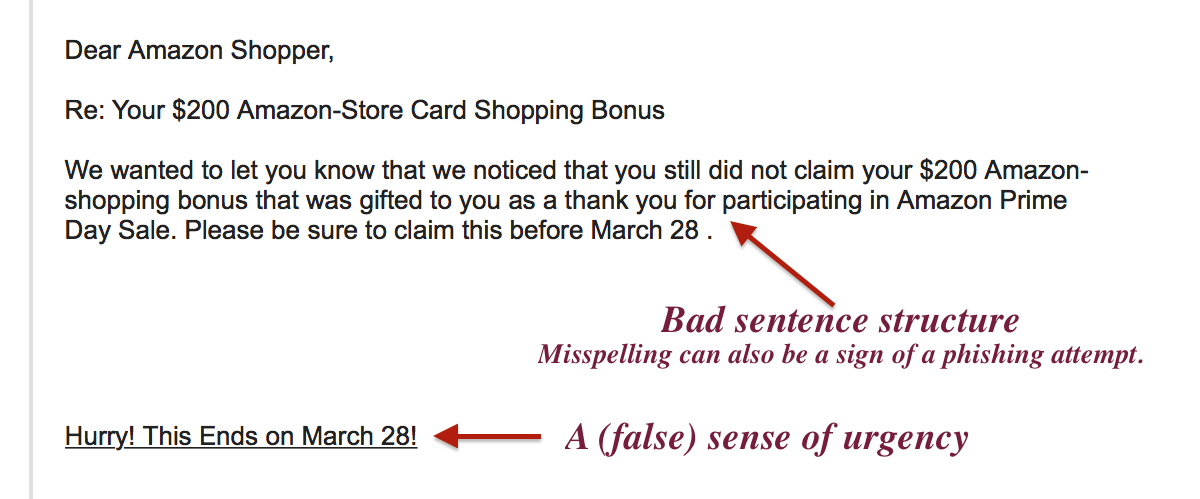
Even though a lot of email contains grammatical errors, businesses have proof readers that will prevent the most egregious errors. Look for bad spelling and even using numbers instead of characters, such as using a zero instead of a capital “O.”
Rule #2: No legitimate company or organization will ask for information to be sent via email
One of the tactics that the phishers use to try to trick you into giving them your personal information is to create a form that looks like it is legitimate. Just as it is easy for someone with moderate skills to fake a web page they can also create a counterfeit form. Not only will the form be counterfeit, but they could also embed programs in that form to steal your information.
Embedded code in documents is called macros. Macros are used to command programs to do something for the user. When used in productive environments, macros can be a wonderful tool to create dynamic documents and provide input validation. But the same instructions that can make macros a productive tool can also be used to do bad things.
Unless you are certain about where the document came from, do not open a document. If you open the document and the program asks if you should enable or run macros, do not enable macros.
This is not just a problem with word processing document. PDF documents can also deliver very nasty malware (malicious software). Not only can an attacker add macros to a PDF document, but someone can embed Flash in those PDF. Flash is the technology that helps you watch online videos and add enhancements to the visual interface of some websites. But Flash can be used to attack your computer system. Opening a PDF file sent by someone you do not know can be as dangerous as a word processing document.
Rule #3: Do not open suspicious attachments
Another trick the attackers try to use is adding an attachment named in a way to entice you to open the file. File names consist of the name of a file followed by a period followed by a file extension. The file extension is used to tell the computer the type of program to execute to allow you to work with the file. There are three file extension that very dangerous and should never be opened unless you are absolutely sure who sent them: .zip, .exe, and .dmg for Mac users.
The .zip file extension tells the computer that the file is something called a Zip archive. A Zip archive is a file that is formatted to allow it to store many files that are compressed. Zip files are used for many legitimate purposes including being the default format of Microsoft Word’s .docx file. Unfortunately, it can contain programs and files that can be used to attack your system.
One of the types of file that can be included in a Zip archive is a .exe or executable file. Simply, these are programs in the same way that Microsoft Word is a program. Once an executable file is opened, it will do whatever it is programmed to do. Among the things that the program can do is keylogging. A keylogger reads what you type on your keyboard, what you click on the screen, and in some cases, what is displayed on your screen. The keylogger will be able to capture the username and password you entered when you visit any website including your bank’s website. The problem is that when a key logging program is run, you do not know it is watching what you type. Nor do you know that it connects to a server somewhere on the Internet to send the information to the attacker. Keyloggers and other malware can infect your system in a way that allows it to continue to exist, even if you reboot the computer.
You may ask about anti-virus software helping stop malware. Anti-virus software is programmed to understand what is known about attack vectors. It cannot protect you if it does not know how the virus works. Remember that the government warned that last year’s flu vaccine was not effective for the version of the virus infecting people? Anti-virus software is similar that if it doesn’t know about the strain it cannot protect you. Hackers are always looking for ways to fool anti-virus software.
For Windows user, you should consider running Windows Defender. Windows Defender is built into Windows but cannot be run if you have another anti-virus software. I use Windows Defender and have been happy with the results. If you want more information about Windows Defender visit this page on Microsoft’s support site.
While Macs are more difficult to attack they are not immune. Mac users should never open a file with a .dmg file extension unless you know who sent the file. The Macintosh .dmg file is a disk image stored as a regular file. A disk image file is formatted to look and acts like a disk so that when you double-click the icon, it will mount on your computer as if you plugged in an external disk drive. Because .dmg files are commonly used to install legitimate software, sometimes the installation can be automatically started. If you allow the installation to continue, you can install software as dangerous as what I described for the Windows .exe file.
OS X is a different type of operating system where if you are careful you can get away without running an anti-virus program. However, if you want to be paranoid (along with me) you might want to run the free anti-malware software from Malware Bytes.
Regardless of the operating system and software you use, ALWAYS KEEP IT UP TO DATE! Patching your computer may be an annoyance but the dangers, if you do not apply security patches, will hurt more and last longer!
Rule #4: When in doubt, throw it out!
 While all this seems simple to me after having worked in this industry for nearly 40 years, I have seen how these concepts are confusing to the non-technical user. The problem with email is that it was developed as a way for researchers to communicate by plain text across Arpanet, the forerunner of the Internet. Email, as a text-based service, \ has been extended in so many ways that it has created a complicated series of standards that require a degree in computer science to analyze. While these complications make it easier to communicate via email it also makes it difficult to secure.
While all this seems simple to me after having worked in this industry for nearly 40 years, I have seen how these concepts are confusing to the non-technical user. The problem with email is that it was developed as a way for researchers to communicate by plain text across Arpanet, the forerunner of the Internet. Email, as a text-based service, \ has been extended in so many ways that it has created a complicated series of standards that require a degree in computer science to analyze. While these complications make it easier to communicate via email it also makes it difficult to secure.
Even if you cannot fully analyze whether the message is spam or legitimate, if you have any doubt, then just press the delete button. If the message came from a source you know, contact them off-line and ask if the mail is legitimate. If you think the email is from your bank, call the bank and ask. If you think the email is from your credit card company but not sure, call the credit card provider and ask. If you think the email sent from the ANA or NGC is suspicious, call them and ask.
A little intuition and some due diligence can be of great help in these circumstances.
Stay safe online!
Apr 3, 2018 | advice, currency, education, web
 Last week, I posted an article about online resources that I use when I want to begin research on a numismatic topic. The list provided a number of resources but a reader wrote to me and noted that I forgot to include paper money resources beyond the Bureau of Engraving and Printing.
Last week, I posted an article about online resources that I use when I want to begin research on a numismatic topic. The list provided a number of resources but a reader wrote to me and noted that I forgot to include paper money resources beyond the Bureau of Engraving and Printing.
Paper Money Sources
When it comes to searching for information on paper money, I always start at one of the following three sites:
The opening line at USPaperMoney.Info says that it is the “home of everything you ever wanted to know about U.S. currency. (Well, almost….)” This is truth in advertising. Even with the page of unanswered questions, the site has everything you could ever want to know about U.S. currency. I just wish the author would organize the site better.
Don and Vic’s World Banknote Gallery is one of those sites that looks like it was created by a seventh grader in 1998 but has a tremendous amount of very useful information. It is one of the best sites I have found to identify world banknotes.
They have a companion site named World Coin Gallery that is similar. I have used this site and have added it to the original bookmarks file. If you downloaded the original bookmarks then right-click (Control-click for Mac users) and select the option to add worldcoingallery.com to your bookmarks.
Last, but definitely not least, is Banknote News by Owen Linzmayer. If you want to know anything about the production of world paper money, this is the site you need to read. In addition to the information, which a lot of it is in blog form and consistently tagged for easy navigation, Linzmayer has also compiled one of the best references on world paper money called The Banknote Book. He said he did this because he and other collectors were frustrated with the “many errors, omissions, and poor-quality images” in the Standard Catalog of World Paper Money.
The Banknote Book can be purchased as a physical book as a three-volume set complete through 2014 or you can buy individual chapters corresponding to the country of your interest.
If you want to check it out for yourself, download 17 Free Sample Chapters and judge for yourself.
Currency Bookmarks
Do you want to add these links to your browser’s bookmarks? Right-click (or Mac users can CTRL-Click) on the following button and select whatever option your browser requires to save the file to hard drive. Import the file as an “HTML Bookmark” file to add these links to your bookmarks.
Mar 31, 2018 | administrative, advice, ANA, security, shows
Normally, I do not directly publish news items but this is important for the entire community.
Did you receive an email or call trying to sell you a Philadelphia World’s Fair of Money hotel room?
The ANA did not authorize this.
It has come to our attention that a third-party booking company inaccurately representing itself as our hotel vendor is contacting ANA members, dealers and exhibitors, offering to book you a hotel room at the ANA World’s Fair of Money; some even provide a promotion code or will misrepresent that they are calling from the hotel.
ANA is not utilizing any housing service vendors for the Philadelphia World’s Fair of Money. Nor has the ANA shared your email with anyone.
Room reservations for the Philadelphia World’s Fair of Money should be made directly with the Philadelphia Marriot Downtown (the show’s host hotel) either by phone – 1-888-236-2427 (mention ANA World’s Fair of Money to secure the group rate) – or via our website at www.money.org/worldsfairofmoney/lodging. Should you want to stay elsewhere, we strongly recommend calling the hotel directly or using a reputable online service such as Hotels.com or Expedia.com.
If you provide your credit card information to any of these unauthorized vendors, your card may be charged but you may not have a reservation when you arrive in Philadelphia. Unfortunately, this is a well-known scam perpetuated on unsuspecting conventioneers across the country.
If you have any questions about the World’s Fair of Money hotel block, or general questions about the show, please contact Jennifer Ackerman at ackerman@money.org, Christie Cooper at ccooper@money.org, or call the ANA Convention team at 1-888-448-3262. Complete information about the show is also available online at www.worldsfairofmoney.com.
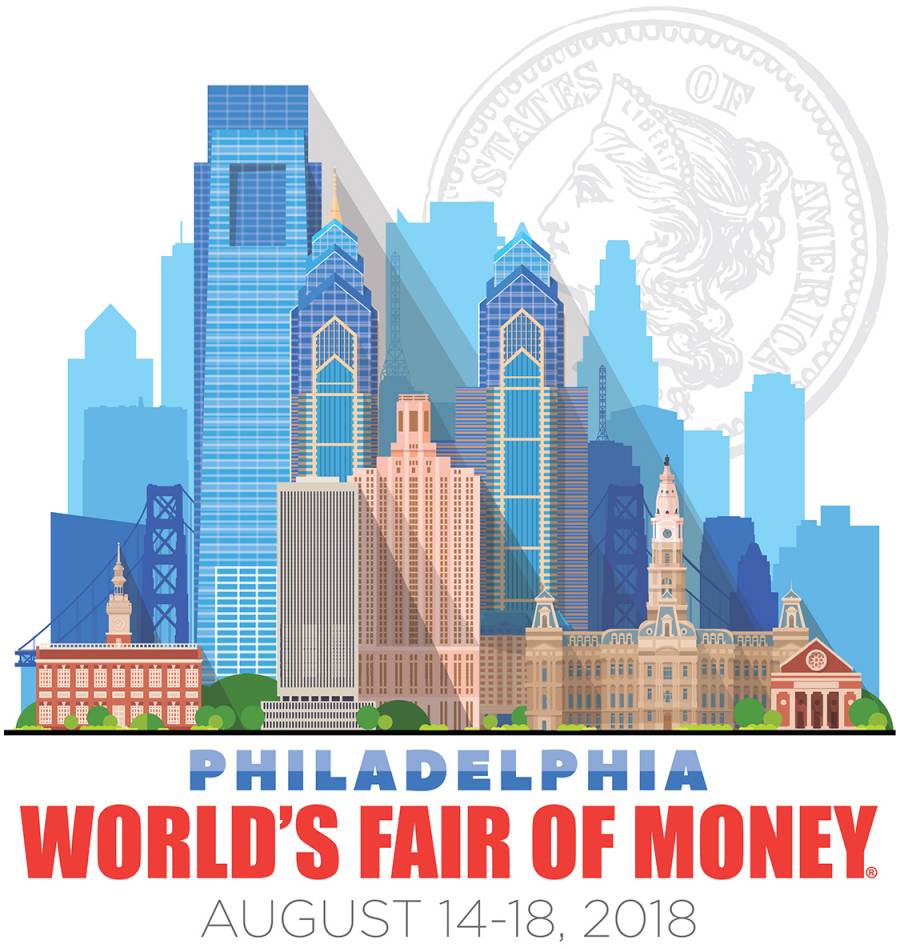
Mar 9, 2018 | advice, coins
Numismatists and serious collectors will tell you to never clean your coins.
 At one time it was common practice to clean coins and even use shellac on copper coins to keep their color. Dealers would dip coins in harsh chemicals to remove dirt and grime in order to make the coins more attractive to buyers. But that was in the past. Today, we are more sophisticated collectors and like our coins with as natural of a surface as possible. Because of this, the value of a cleaned coin will drop since it will not be as desirable as a coin with an original surface, regardless of the coin’s overall condition.
At one time it was common practice to clean coins and even use shellac on copper coins to keep their color. Dealers would dip coins in harsh chemicals to remove dirt and grime in order to make the coins more attractive to buyers. But that was in the past. Today, we are more sophisticated collectors and like our coins with as natural of a surface as possible. Because of this, the value of a cleaned coin will drop since it will not be as desirable as a coin with an original surface, regardless of the coin’s overall condition.
In fact, cleaning a coin or altering it to make the coin look better is not only unethical, but it can also be a crime since you would be representing a coin as original and it is not. It is called coin doctoring. This is such a touchy subject for the numismatic community that the Professional Numismatic Guild (PNG), an association of top dealers, spent two years trying to define what coin doctoring really means. In 2012, PNG came out with the following three conditions that indicates coin doctoring (emphasis added):
- Movement, addition to, or otherwise altering of metal, so that a coin appears to be in a better state of preservation, or more valuable than it otherwise would be. A few examples are plugging, whizzing, polishing, engraving, “lasering” and adding or removing mintmarks.
- Addition of any substance to a coin so that it appears to be in a better state of preservation or more valuable than it otherwise would be. The use of solvents and/or commercially available dilute acids, such as Jeweluster, by qualified professionals is not considered coin doctoring.
- Intentional exposure of a coin to any chemicals, substances, or processes which impart toning, such that the coin appears to be in a better state of preservation or more valuable than it otherwise would be. Naturally occurring toning imparted during long-term storage using established/traditional methods, such as coin albums, rolls, flips, or envelopes, does not constitute coin doctoring.
But there may be good reasons to clean collectible coins that may not be considered coin doctoring. Some may have collectibles that could be saved if we could just get the dirt or grime off. Some may have some PVC damage that may not have attacked the surface of the coin and could also be saved.
Another reason to clean coins is if you found the coins with a metal detector buried in the ground. Years of being buried in the dirt probably stored in non-archival materials can take its toll on a coin. These coins can be cleaned to remove the dirt.
The purpose is to remove the foreign substances from the surfaces and not to change the physical properties of the coin.
WARNING: IF YOU ARE UNSURE ABOUT THIS PROCEDURE OR WANT TO CONSERVE A RARE COIN, CONTACT A PROFESSIONAL CONSERVATION SERVICE.
If you want to try to clean your coin, consider using neutral and non-abrasive means, such as soaking your coins in extra-virginolive oil or acetone. Yes, I did say extra-virgin olive oil. Extra-virgin olive oil is as neutral as you can get with a product that has been used to make soaps and other cleaners. In order for olive oil to be branded as “extra-virgin,” it must be made by the natural pressing of olives with no chemical additives and be no more than 0.8 percent acidic. Not only does the purity make for oil that is good for consumption, the natural fats can react with dirt on the coin and naturally loosen it to be easily rinsed away.
When trying to remove PVC or other stubborn dirt, try using acetone. Acetone is a natural solvent, chemically known as an organic compound, that has many uses. Acetone is slightly acidic, no more than two percent by volume, which is not enough to cause damage to coining metals.
When you buy acetone, check the contents. Acetone that is sold on the paint aisles may contain extra ingredients like turpentine to aid in cleaning brushes. It is important that you use pure acetone.
Onyx Professional is pure acetone marketed to the beauty care market and is safe to use. Its advantage is that it comes in smaller containers than other brands and can be easily ordered
online.
If you use acetone you need to use 100-percent pure acetone and not nail polish remover. Although nail polish remover does contain acetone, it also contains perfumes and is diluted to the point that it will not work on your coins. The additives will damage the coin’s surface. Acetone can be purchased at your local hardware store and is sold either by the quart or gallon. While shopping, you should also purchase protective gloves (made from powder-free latex or nitrile), a protective mask for your nose and mouth, and something for your eyes if you do not wear glasses. Always remember your safety when using any chemical!
You should never use vinegar or soap. Vinegar is acidic and could affect the surface of the coin. Using vinegar can cause the small scratches and imperfections from the minting or bagging process to become more pronounced. These small etches can also become rough and allow new dirt to adhere to the coin.
Commerical Coin Cleaners
If you go to any coin supply company, you will find commercial coin cleaners. While there are a few that claim to be pH neutral, they contain elements that could cause damage to coins. For metal detector finds and non-rare coins, these may be fine products to use. Others that will brighten or tone a coin do so by altering the surfaces and are not recommended.
Soap is a salt of a fatty acid. Chemically, a salt is a compound that neutralizes the reaction between the alkaline and acid properties of the chemicals. When fats are combined with other ingredients to reduce its acidity, it creates a soap that can be used for cleaning or lubrication. The problem is that the fatty acids on their own will not damage coins, you never know what the alkaline components are that have been added to balance the pH (potential of Hydrogen) of the acid.
Unfortunately, there is no standard definition of pure soap. Its common use is to define a product whose pH is as close to neutral (pH 7) as chemically possible. Unless the company discloses its formula, it would be impossible to tell if the makeup of the soap will negatively interact with the metals.
One final item you should have is distilled water. Distilled water has all the natural impurities removed and reduced the risk of the rinse damaging your coins. Using a squeeze bottle filled with distilled water is the most effective way to rinse away the olive oil or acetone.
When using either olive oil or acetone, the procedure is similar:
- Start with a clean work area. Wash your hands and work on a clean surface. Cleaning your workspace with anti-bacterial wipes will also help. Make sure your work area is safe and well ventilated, especially if you are using acetone.
- Consider covering your work surface with a lint-free towel folded over several times. If you drop the coin, you will drop it on the padding provided by the towel.
- If you are using acetone, don your safety gear. I cannot stress enough that while using acetone is an effective cleaner, you need to work with it in a well-ventilated area and away from any ignition sources, like your kitchen. If you smoke, you may want to leave your matches and lighter outside your work area.
- Pour your acetone or olive oil into a glass that would cover the coin. The depth should be about one-quarter to one-half inch of your liquid. It is also important to use glass for this. Acetone will react with plastic and olive oil may loosen anything that would be stuck to the plastic. A clean glass jar, drinking glass, or dessert bowl works best.
- If you are using acetone, place the coin in the glass and swirl it around for about 30 seconds. After a few swirls, you should start to see dirt in the acetone. If there is PVC on the coin, hopefully, you can see it begin to loosen. Do not do this for much longer than 30 seconds since the dirt in the acetone could scratch the coin.
- If you are using olive oil, place the coin in the glass with the dirtiest side up. Swirl it a few times to ensure the coin is coated and let it sit. Olive oil is not as strong as acetone and needs time to loosen the dirt. Depending on how dirty the coin is, let it sit for 30 minutes to three hours. Do not touch or swirl the coin. Just let it sit.
- Remove the coin from its bath with tongs or your gloved hand. Then using your squeeze bottle filled with distilled water, rinse the coin. Rinse it well to remove the acetone or olive oil. Olive oil is harder to rinse, so patience is required.
After the rinse, place the coin on a lint-free cloth and let it air dry. DO NOT RUB THE COIN! Even though you are using a lint-free cloth, it will scratch the surface. Wait for the coin to dry naturally before storing it away.
If your cleaning attempt did not work, try again. If you used olive oil and want to try again, let the coin sit longer. You may also try using acetone instead. If you used acetone to try to remove PVC damage and it did not work, there is one more thing you can try using a cotton swab:
- After swirling the coin in the acetone, remove the coin from the liquid and place it on a clean surface. Make sure you are using all of your safety precautions.
- Using a cotton swab with a cardboard handle (do not use once with plastic handles since the acetone will react with the plastic), dip the cotton in the acetone and roll the cotton tip across the problem area of the coin. You can gently nudge at PVC particles that may still be attached to your coin. DO NOT RUB THE COIN! You are trying to remove the PVC without causing any further damage and rubbing it or using any other abrasive motion will damage the coin.
- Keep rolling the cotton tip over the area, changing tips after a few rolls. You may also want to have a little clean acetone nearby to dip the cotton swab.
Most importantly, be patient. It may take a few swabs to see results. If it is not working or you feel anxious doing this, then stop. The last thing you want to do is add damage to your collectible. At this point, if the coin is not “clean” then it may not be cleanable. You can try to contact a professional conservation service for additional help.
When you are done, make sure you clean your work area and dispose of your used materials properly. Acetone is considered hazardous so NEVER POUR ACETONE DOWN THE DRAIN. Do not let it sit out because allowing it to evaporate will add toxic vapors in the air. Many cities and towns have hazardous waste processing rules. Find out what they do in your area to allow for disposal of acetone. You can also ask the sales clerk at the store where you bought the acetone for your area’s acceptable disposal options.
While olive oil is not hazardous, it is not a good idea to pour it down the drain. The natural fat in the olive oil will congeal and may stick to your pipes. After a while, the fat builds up and will cause a clog. In my neighborhood, the water company once had to remove a 25-pound congealed ball of grease that caused a backup in everyone’s drain. It was not a pretty sight. You can dispose of olive oil with the trash since it is a natural product and will not pollute the environment.
Feb 28, 2018 | advice, coins, commemorative, commentary

Image of the alleged 1964 Morgan Dollar from the cover of A Guide Book to Morgan Silver Dollars 5th Ed. by Q. David Bowers
Our “friends” at the National Collectors Mint has seized on the story of the dies and drawings of a potential 1964 Morgan Dollar that was first published in the fifth edition of A Guide Book of Morgan Silver Dollars. They came up with a tribute proof.
As with all of their tribute proofs, it is clad in 71 milligrams of pure silver. To give you an idea of how much 71 milligrams is, it is 0.002504 ounce or just a little more than two one-thousandths of an ounce. If troy ounces are more your style, it is 0.0022827 troy ounces. This item has 4-cents worth of silver using the current silver price of $16.33 per troy ounce.
With mouth agape as I was trying not to throw something at the television, not only are they selling these at $9.95 each ($19.95 on their website) but they may have figured out a way not to have to embed the word COPY somewhere. They must have made a “deal” with someone in the Cook Islands to put their name on the coin so as to represent it as a coin issued by or for the Cook Islands.
On the back of the coin, rather than the regular legend, it says “TRIBUTE TO THE UNITED STATES OF AMERICA.” A portrait of Queen Elizabeth II is on the left side of the eagle and “COOK ISLANDS” is on the right. They are claiming that these are legal tender coins of the Cook Islands. The commercial does not identify these as non-circulating legal tender coins even though they do make that distinction on their website.
In all other ways, it looks like it could be a 1964 Morgan Dollar.
I was told that commercials for this coin first appeared last August, likely not on cable stations I watch. Apparently, they are stepping up their advertising because I saw it twice on Tuesday night.
Like most of their stuff, collectibility is in the eye of the beholder. However, if someone asks whether you think it is a good buy I would recommend you tell them to save their money. I have seen these “tribute coins” in the junk bins at shows for prices ranging from $1.00-$2.50. The fact that they are in dealer junk bins should be enough of a warning!
 Last month, the American Numismatic Association announced that they have partnered with Numismatic Guarantee Corporation (NGC) to launch the ANA Coin Registry.
Last month, the American Numismatic Association announced that they have partnered with Numismatic Guarantee Corporation (NGC) to launch the ANA Coin Registry.










 → Read more at
→ Read more at 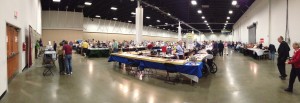
 The
The 





 Last week, I
Last week, I 
 At one time it was common practice to clean coins and even use shellac on copper coins to keep their color. Dealers would dip coins in harsh chemicals to remove dirt and grime in order to make the coins more attractive to buyers. But that was in the past. Today, we are more sophisticated collectors and like our coins with as natural of a surface as possible. Because of this, the value of a cleaned coin will drop since it will not be as desirable as a coin with an original surface, regardless of the coin’s overall condition.
At one time it was common practice to clean coins and even use shellac on copper coins to keep their color. Dealers would dip coins in harsh chemicals to remove dirt and grime in order to make the coins more attractive to buyers. But that was in the past. Today, we are more sophisticated collectors and like our coins with as natural of a surface as possible. Because of this, the value of a cleaned coin will drop since it will not be as desirable as a coin with an original surface, regardless of the coin’s overall condition.
